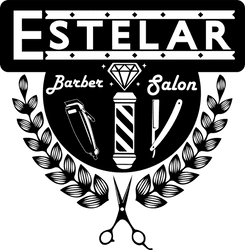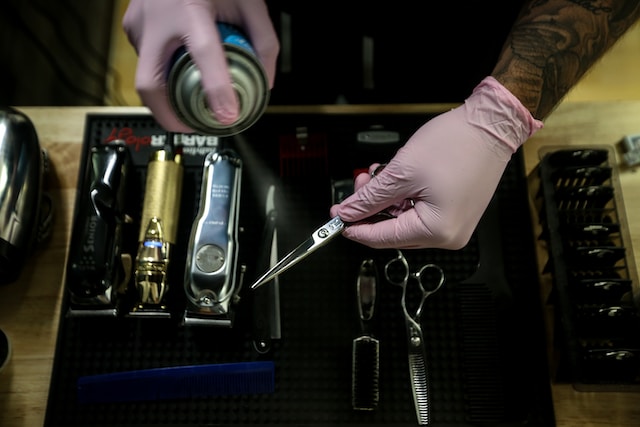Ensuring the safety and hygiene of a barbershop is crucial for the well-being of both clients and staff. Here are some best practices and sterilization techniques to maintain a safe and clean environment:
- 1. Hand Hygiene:
- 2. Personal Protective Equipment (PPE):
- 3. Cleaning and Disinfecting:
- 4. Sterilization of Tools:
- 5. Implement Appointment Systems:
- 6. Waiting Area:
- 7. Proper Ventilation:
- 8. Training and Education:
- 9. Client Screening:
- 10. Payment Handling:
- 11. Emergency Preparedness:
- 12. Regular Audits and Inspections:
- 13. Licensing and Compliance:
- 14. Communication:
- Questions and Answers
- Q1: Why is barbershop safety important?
- Q2: What are the key practices for maintaining a safe barbershop environment?
- Q3: How should tools and equipment be sterilized in a barbershop?
- Q4: What is the significance of appointment systems in barbershops?
- Q5: How can barbershops ensure proper ventilation?
- Q6: How should barbershops handle client screening?
- Q7: What should barbershops do in case of potential COVID-19 cases among clients or staff?
- Q8: How can clients and staff ensure their safety during a barbershop visit?
- Q9: How often should barbershops conduct audits and inspections of their safety practices?
- Q10: Are there any legal requirements for barbershops regarding safety and hygiene?
- Q11: How can barbershops communicate their safety measures to clients?
- Q12: How should barbershops handle payment handling during the pandemic?
- Q13: What should barbershops include in their emergency preparedness plan?
- Q14: How can barbershops ensure compliance with safety regulations?
- In Conclusion
1. Hand Hygiene:
All barbers and staff should wash their hands thoroughly with soap and warm water for at least 20 seconds before and after each client.
2. Personal Protective Equipment (PPE):
Barbers should wear disposable gloves when handling equipment and touching clients.
Face masks should be worn at all times by both barbers and clients, covering the nose and mouth.
3. Cleaning and Disinfecting:
All tools and equipment (clippers, scissors, razors, combs, brushes) should be cleaned and disinfected between each client.
Non-porous surfaces like countertops and chairs should be wiped down and disinfected regularly throughout the day.
Use an EPA-approved disinfectant for this purpose, and follow the manufacturer’s instructions for proper dilution and contact time.
Replace towels and capes with clean, laundered ones for each client.
4. Sterilization of Tools:
Certain tools, like scissors and razors, should be sterilized in an autoclave or using heat sterilization methods regularly.
Barbers should use disposable blades and change them between clients.
5. Implement Appointment Systems:
Consider implementing an appointment system to manage the number of clients in the shop at any given time, allowing for social distancing.
6. Waiting Area:
Arrange waiting areas to ensure social distancing between clients.
Remove any communal reading materials, toys, or other items that are difficult to disinfect.
7. Proper Ventilation:
Ensure good ventilation by opening windows and using air purifiers to help reduce the concentration of airborne particles.
8. Training and Education:
Train staff in proper hygiene, cleaning, and disinfection protocols.
Stay informed about the latest health guidelines and update your practices accordingly.
9. Client Screening:
Screen clients for symptoms of illness or recent exposure to COVID-19. Encourage those who are feeling unwell to reschedule their appointments.
10. Payment Handling:
Encourage contactless payment methods to minimize physical contact between clients and staff.
11. Emergency Preparedness:
Have a plan in place for responding to potential COVID-19 cases, including contact tracing and temporary closure if necessary.
12. Regular Audits and Inspections:
Conduct regular internal audits and inspections to ensure that safety and hygiene practices are being followed consistently.
13. Licensing and Compliance:
Ensure that your barbershop complies with local health and safety regulations and licensing requirements.
14. Communication:
Clearly communicate your safety measures to clients through your website, social media, and physical signage within the shop.
Remember that the specifics of safety protocols may vary by location and can change over time as new information becomes available. Stay up-to-date with local health department guidelines and be prepared to adapt your practices accordingly to maintain a safe and clean barbershop environment.
Questions and Answers
Q1: Why is barbershop safety important?
A: Barbershop safety is crucial to protect the health and well-being of both clients and staff. It helps prevent the spread of infections, including but not limited to COVID-19, and ensures a clean and hygienic environment for all.
Q2: What are the key practices for maintaining a safe barbershop environment?
A: Key practices include regular hand hygiene, proper cleaning and disinfection of tools and surfaces, sterilization of certain tools, appointment systems to manage client flow, proper ventilation, and the use of personal protective equipment (PPE) like masks and gloves.
Q3: How should tools and equipment be sterilized in a barbershop?
A: Some tools should be sterilized using an autoclave or heat sterilization methods. Disposable blades should be used and changed between clients. Always follow manufacturer instructions for sterilization.
Q4: What is the significance of appointment systems in barbershops?
A: Appointment systems help manage the number of clients in the shop at any given time, allowing for social distancing and reducing the risk of overcrowding.
Q5: How can barbershops ensure proper ventilation?
A: Proper ventilation can be achieved by opening windows and using air purifiers. This helps reduce the concentration of airborne particles, including potentially infectious ones.
Q6: How should barbershops handle client screening?
A: Barbershops should screen clients for symptoms of illness or recent exposure to COVID-19. Clients who are feeling unwell should be encouraged to reschedule their appointments.
Q7: What should barbershops do in case of potential COVID-19 cases among clients or staff?
A: Barbershops should have a plan in place for responding to potential COVID-19 cases. This includes contact tracing, temporary closure if necessary, and following local health department guidelines.
Q8: How can clients and staff ensure their safety during a barbershop visit?
A: Clients and staff should follow recommended safety measures, including wearing masks, practicing hand hygiene, maintaining physical distance, and complying with any additional safety protocols implemented by the barbershop.
Q9: How often should barbershops conduct audits and inspections of their safety practices?
A: Barbershops should conduct regular internal audits and inspections to ensure that safety and hygiene practices are being followed consistently. The frequency may vary but should be done regularly.
Q10: Are there any legal requirements for barbershops regarding safety and hygiene?
A: Yes, barbershops are typically required to comply with local health and safety regulations and licensing requirements. It’s essential to stay informed about and adhere to these legal requirements.
Q11: How can barbershops communicate their safety measures to clients?
A: Barbershops can communicate their safety measures through their website, social media channels, and physical signage within the shop to ensure clients are well-informed about the precautions in place.
Q12: How should barbershops handle payment handling during the pandemic?
A: Barbershops should encourage contactless payment methods to minimize physical contact between clients and staff.
Q13: What should barbershops include in their emergency preparedness plan?
A: Barbershops should have a plan in place for responding to potential COVID-19 cases, including contact tracing and temporary closure if necessary. It’s essential to stay updated with local health guidelines.
Q14: How can barbershops ensure compliance with safety regulations?
A: Barbershops must ensure compliance with local health and safety regulations and licensing requirements. Regular audits and inspections help ensure adherence to these regulations.
In Conclusion
Remember that the specifics of safety protocols may vary by location and can change over time, so it’s crucial to stay updated with local health department guidelines and adapt practices accordingly.

